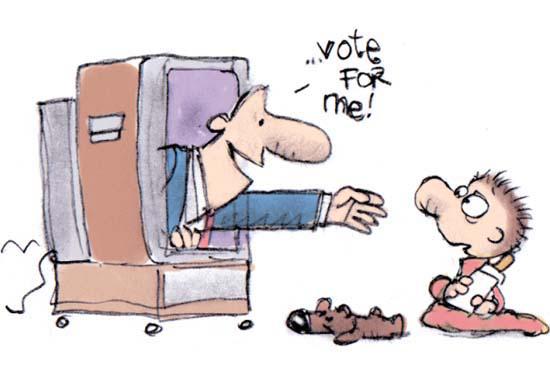There is just under one week left until Election Day.
It all may be increasingly apparent from the swarm of television, radio and online advertisements both endorsing and criticising candidates and ballot propositions.
It may be rare to see or hear an election campaign ad that actually provides information on a candidate’s political platform or the implications of various propositions. Instead, what seems to be the common thread among advertisements is the strategic tendency to attack — or at least insinuate flaws in — an opponent’s argument or policy stance.
“There’s a lot of research that shows that negative advertisements are more memorable,” said Dr. Lisa Bryant, assistant professor of political science at Fresno State. “Whether or not those are factually accurate doesn’t necessarily matter. They resonate with people more.”
By this standard, one is more likely to be exposed to the negative traits and perceived failures of a politician or article of legislation than they are to actually learning any information regarding the items on the upcoming ballot.
This could be due to the idea that people tend to believe the negative things one candidate says about the other, rather than what candidates say about themselves, according to Bryant. She added that this may be because voters expect political advocates to say only good things about themselves, whereas, critiquing one’s opponent may have a more authentic ring to it.
These ads are part of a larger advertising strategy. According to Bryant, the strategy goes something like this: candidates put out ads at the beginning of the election race that introduce themselves and establish their policy stance. From there, they try to differentiate themselves from their opponent.
This is where attack ads come into play. Rather than simply differentiating themselves in terms of policy, they begin to criticize and demean the efforts, accomplishments and sometimes even the morality of their opponents.
These political attack ads may not be as effective at persuading strong partisan voters, Bryant said, but may be able to sway undecided voters. She also said that these ads are most effective at swaying voters with low political knowledge and those without party affiliations. However, they can also deter these voters altogether.
According to Bryant, this bombardment of political attacks can actually negatively impact civil engagement by instilling voters with doubt about their representatives and apathy toward the democratic system at large.
“One thing that they do is they decrease trust in government,” Bryant said. “People aren’t real motivated to go vote when they think that politicians are just looking out for themselves and their cronies anyways.”
Dr. Douglas Fraleigh, a professor in the communications department at Fresno State, noted that a common strategy employed by campaign ads is the use of framing. When these ads use words that have negative or positive connotations, audiences tend to attribute their own meanings to the message.
Words with political associations can be relevant on both a national and a local scale. For example, according to Fraleigh, words like “immigrant” and “Trump” can have connotations at a national level, but in the Central Valley, words like “water” may have significant underlying meanings in the minds of local residents.
“The term ‘water’ can certainly activate frames in the minds of a lot of Valley voters because that’s a very important issue (in the Valley),” Fraleigh said. “That can sometimes be persuasive, even if the candidate doesn’t say very much about their specific ideas for water … the way the issue is presented can activate and persuade voters.”
Bryant also said that the “us versus them framing” in campaign ads feeds into the growing tribal, partisan mentality of politics which further divides voters and hinders bipartisan efforts, leading to a breakdown of cooperation in government and inhibiting legislative progress.
To be adequately informed about the individuals and measures one votes for, Bryant recommends conducting independent research and verifying the stated facts. She suggests looking at nonpartisan sources of information such as votersedge.org for unbiased, credible information.
“I think that in this era of misinformation, intentional misinformation, that doing a little bit of your own research, even if it’s a quick Google search … becomes increasingly important,” Bryant said. “Your vote is powerful and it’s important, but that might mean a little bit of work has to go into it too.”





